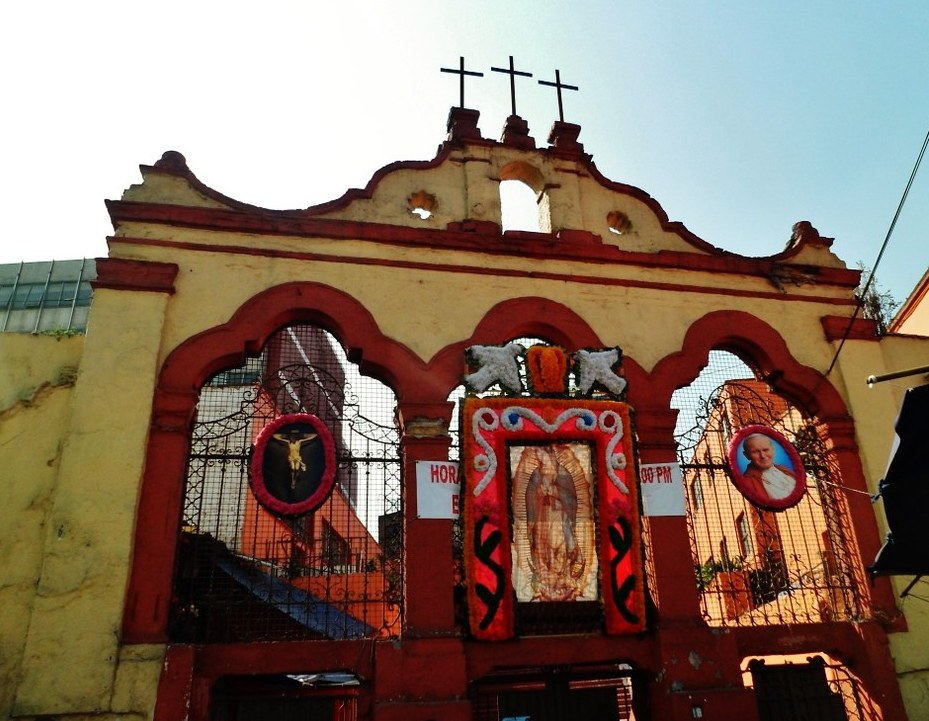
___
The Chapel of San Juan Bautista in the old neighborhood of Tlacateco (today Becerra) is likely a 17th century structure. Often nearly hidden by the street vendors out front, it’s a national treasure. It’s one of the places that make old Tacubaya such a treat to visit. The site of the church, on a small hill, is very likely a teocalli, i.e.; ancient ceremonial site.
Built with brick, lime and sand, over the years it was ornamented with increasingly fine paintings and decorations. The current façade is believe to be the oldest part of the church. The interior and atrium have been renovated numerous times. By 1932, the stairs leading up to the atrium had completely disappeared. In 1940, another small chapel was opened on the south wall of the nave. This altered the original floor plan. By 1952, the interior of the church had been totally transformed with new ceilings and walls removed.
Today, the church is almost lost between the Miguel Alemán Viaduct and the surrounding, more modern neighborhood. The walls surrounding the dramatic multi-level atrium have been modified. Perhaps most surprising, inside is a very old Solomonic order altarpiece. This was created in the latter half of the 17th century. Within it are five paintings.
 +52 (55) 5271 1306
+52 (55) 5271 1306
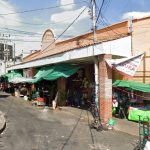
Nearest at 0.10 kms.

Nearest at 0.29 kms.

Nearest at 0.31 kms.
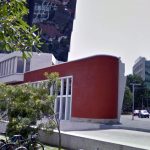
A remarkable vision of the mid-century in Mexico City . . .
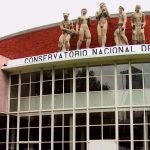
A remarkable National Monument and School of Music . . .
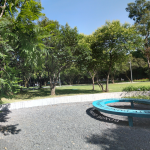
A wonderfully kept secret part of Chapultepec on the edge of Lomas . . .
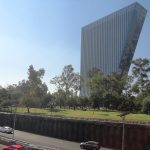
A dramatic, looming tower above western Chapultepec . . .
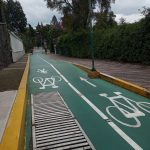
Main street in one of Mexico City's most iconic southern neighborhoods . . .